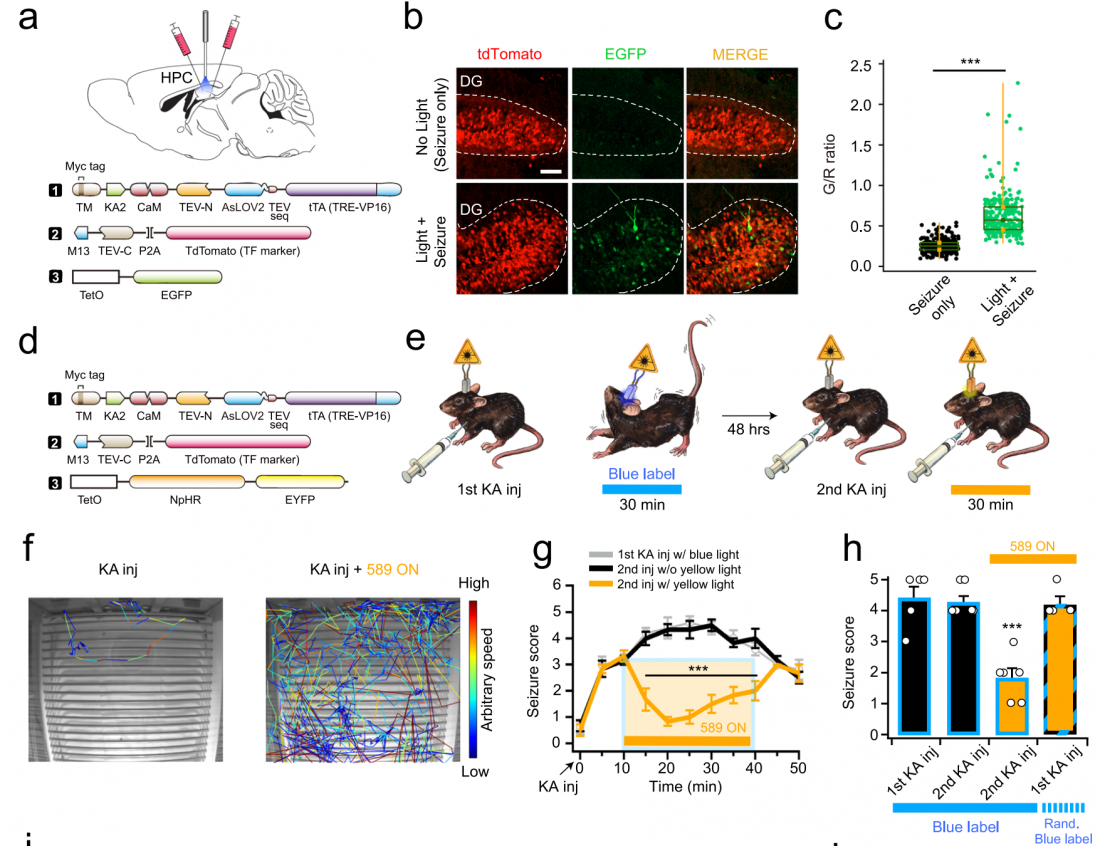□ We are now closer than ever to being able to read someone else’s memory, and manipulate it to control behavior, just as seen in the move “Inception”. Prof. Jung Ho Hyun at the Department of Brain Sciences at the DGIST (President Yang Gook) announced on the March 30th (Thu) that he had developed a tool that can verify the causal relationship between specific neurons and circuits and specific behaviors through joint work with a research team at Johns Hopkins University School of Medicine.
□ Cal-Light (Calcuim and Light-Induced Gene Handling Toolkit) is a technology that uses simultaneous bursts of light and calcium to visualize or control the activity of nerve cells by turning on and off the light only when desired. In order for Cal-Light technology to operate efficiently, labeling of neurons activated by specific actions is required. In addition, a switch capable of controlling the activity of a specific cell is also necessary. However, the existing Cal-Light technology has a disadvantage in that specific neurons are labeled by action voltage-independent calcium signals, leading to decreased accuracy.
□ To overcome this issue, Prof. Hyun’s research team has developed the updates ST-Cal-Light (Soma-Targeted Calcium and Light-Induced Gene Handling Toolkit) system, a technology capable of labeling neurons with much better efficiency than the existing Cal-Light technology, as it enables labeling that is more dependent only on the action voltage generated in the cell body.
□ Furthermore, the ST-Cal-Light technology, which is an upgraded version of the existing Cal-Light technology, increases the cell responsiveness to calcium and light because the protein is concentrated in the cell body, meaning that neurons involved in specific behaviors can be labeled with higher spatiotemporal resolution than before. Using laboratory animals, it was found that ST-Cal-Light technology can also be used to treat neurological brain diseases such as epilepsy in the preclinical stage.
□ In addition, Prof. Hyun’s research team produced genetically engineered mice with conditional knock-in of the cell body-targeted Cal-Light gene, thereby enabling the verification of the causal relationship between specific neurons and neural circuits, and specific behaviors through neuronal labeling and regulation in live animals. This technology, which can accurately label and control nerve cells involved in specific behaviors, is expected to be used as a key technology to identify the link between a specific nerve cell ensemble and behavior, which was previously difficult to study.
□ Prof. Hyun said, “The results of this study suggested that it would be possible to inject pleasant memories or restore lost memories by manipulating emotions and behaviors using switches that can control the activity of specific nerve cells,” adding that “We expect to be able to suggest strategies for developing new treatments for depression or Alzheimer's disease.”
□ In the present study, Prof. Jung Ho Hyun of the Department of Brain Sciences at the DGIST participated as the first author and Prof. Hyung-Bae Kwon of Johns Hopkins Medical School participated as the corresponding author. The research results were published online on December 13, 2022 in the renowned academic journal ‘Nature Communications’. This project was carried out with the support of the ‘Grand Challenge Research Innovation Project (P-CoE)’, a DGIST basic project of the Ministry of Science and ICT.
Correspondence Author Email Address : [email protected]



